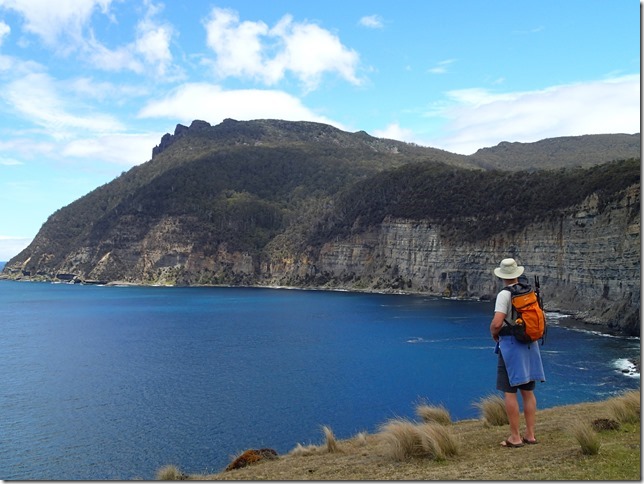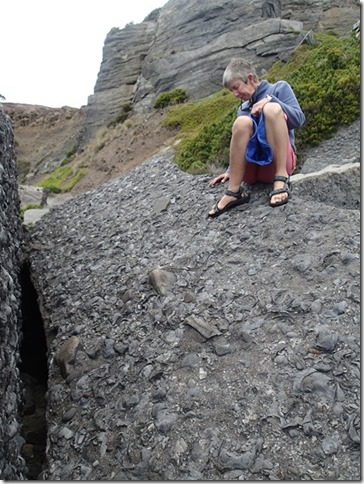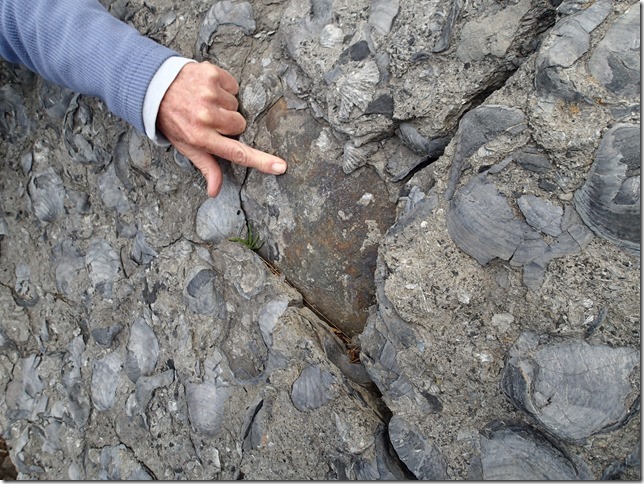Maria 2

VulcanSpirit
Richard & Alison Brunstrom
Thu 18 Dec 2014 07:04
|
Maria has some very interesting geology. Here are some of the cliffs of the
NE shore:
 The hills are largely granite, but in the cliffs you can see banded
sandstones and just to my left is, very surprisingly, a limestone quarry with an
amazing fossil bed:
 There are bands of limestone here that are almost entirely fossils, as you
can see. But there are also some anomalous stones:
 These are quite fascinating. The interpretation is that they are
‘dropstones’. This limestone was laid down in a cold shallow sea when Australia
was much further south (it is currently moving north at about 10cm per year).
These stones arose from the action of ice on much older adjacent rocks, and were
carried out to sea on seasonal ice floes. In summer the ice melted and the
stones it was carrying dropped onto the shellfish beds on the sea floor beneath,
with the whole lot subsequently becoming fossilised. At other times sandstone
and mudstone was laid down as sea levels changed. The whole cycle was repeated
many times over a very long period giving rise to the bands visible in the
cliffs today.
But there is more to these beds than this. Firstly, look at some of the
shells:
 This particular one is Deltopecten, and as you can see it is
almost indistinguishable from a modern scallop, Pecten, despite
the fact that it is well over 200 million years old! The reason for this
seems to be that they have hit upon a successful design, ideally suited for
their lifestyle. The ecological niche they occupy stays remarkably stable over
very long periods of time; there is no need to evolve a new body shape or
style of life – so they don’t! Amazing.
But that’s not all. Some of this fossil bed lies right on the
Triassic-Jurassic boundary (now dated with extraordinary accuracy to 201
million years ago) when over a period of certainly less than 10 000 years about
half of all species then alive globally went extinct – which freed up ecological
niches allowing the subsequent rise of the dinosaurs. The probable cause was
volcanic rather than meteoric. And this site is part of the evidence. Amazing
again.
|